|
Here are some images of the Scalefour Society's components for conductor rails. References to prices and availability can be found via the Scalefour Stores page.
Conductor Rail Supports component notes
by Russ Elliott
Conductor rail
This is correct-section scale 150lb/yard conductor rail.
|
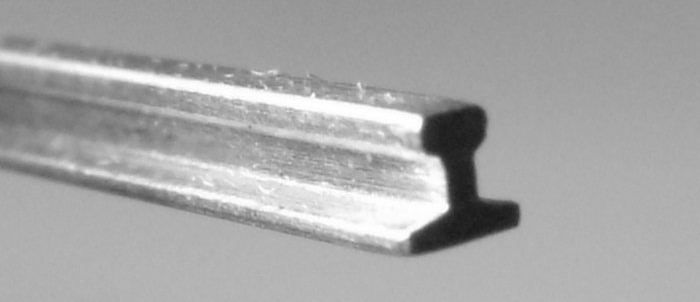
|
LT conductor rail ramps
Three types are available in cast (lost-wax) nickel-silver; two types are pictured here. The masters for these castings were made by Peter Wilson.
|
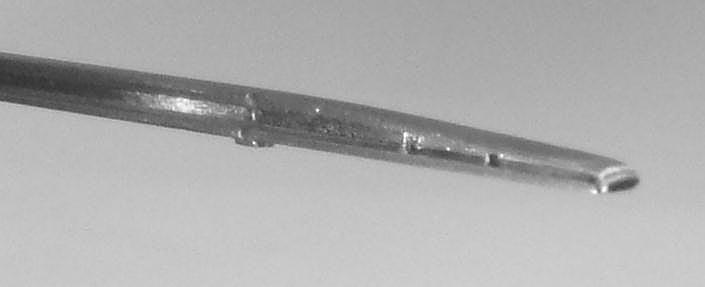

|
|
Here's a pic taken by Ted Scannell of a ramp in trackwork. The conductor rail supports here are Ted's own brass versions lost-wax cast from original masters made by Peter Wilson.
|
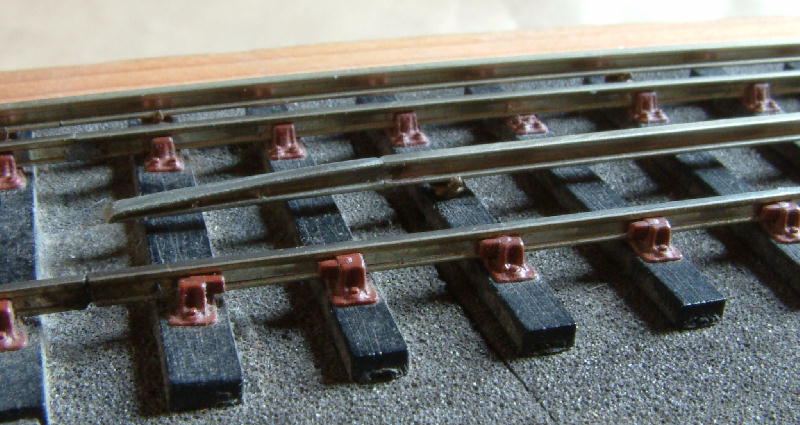
|
Component identification on sprues for Conductor Rail Supports
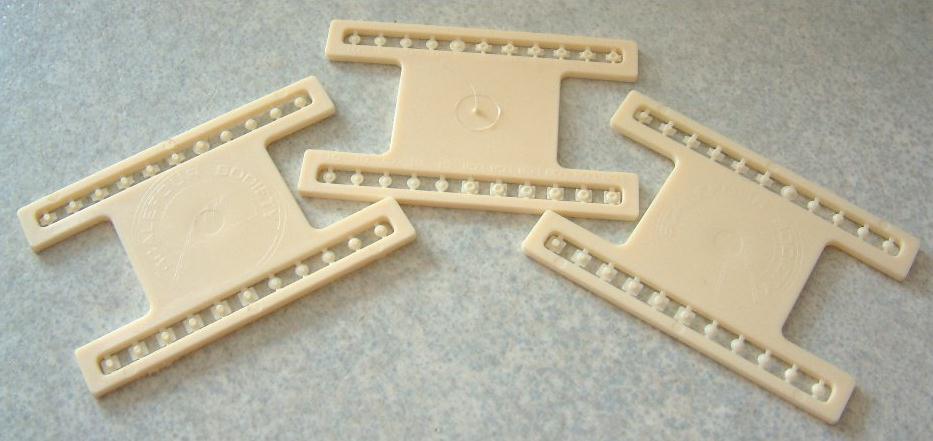
photo: Trevor Grout
|
Unless you use a 'soft pencil rub' as recommended by Tony Sissons in his article in MRJ170, it is somewhat difficult to read the component references on the ivory-coloured moulding, so here's a diagram.
Note: Tony got his LT and his Southern bases well confused in his MRJ article. The LT bases LOB and LCB adopted in the product have rectangular clamps, befitting late 20th century LT practice, whereas the Southern base (SB) has small end clamps to depict the classical Southern design. Very modern (post 2000, say) Southern practice indicates that larger clamp designs of various shapes are being increasingly used. Some of these shapes are rectangular, so the use of the LOB base in a non-LT application could be perceived as legitimate. Check your prototype and your era!
|
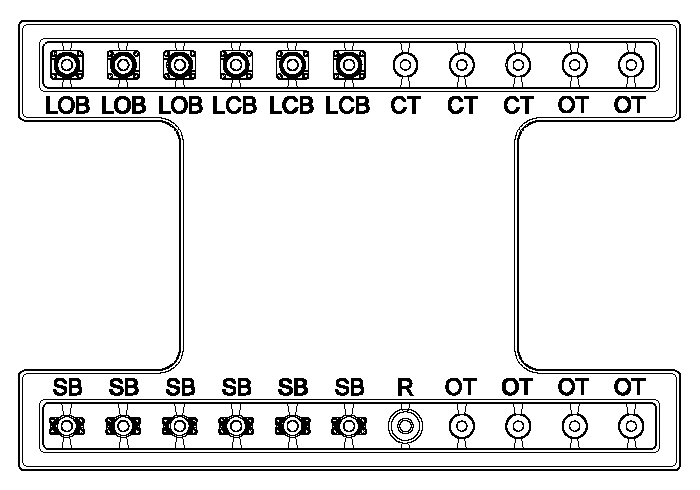
|
|
Base orientation Components SB, LOB and LCB are not 'square' in plan as mentioned by the MRJ170 text; they are rectangular. The diagram adjacent illustrates the product instructions' statement "Note the orientation of the bases LOB, LCB and SB with respect to the cradle – the longer dimension of all the bases should align with the timber axis."
|

|
|
Purpose of component R
|
Component R is the low ramp support under the ends of a Southern (bent down) ramp – it does not, as implied in the MRJ text, have any connection with mainstream LT practice, although I should note that LNWR practice, which LT inherited parts of, was to use a bent ramp à la Southern but with the bend not as pronounced as the Southern. Whether the LNWR (and subsequently LT on ex-LNWR lines) actually used a low ramp support equivalent to the function of component R is as yet unknown.
|
|
Use of Exactoscale concrete-sleeper flat-bottom base
|
The choice of sleeper adopted in the Exactoscale concrete-sleeper FastTrack flat-bottom base, as used in Tony's MRJ article, is F27. Conductor rails are not used on an F27 because it is not suitable. Colin Craig has provided information, based on his articles in DEMU's Update magazine, to indicate the sleeper used for 3rd rail application was an F24 derivative. This F24 derivative has a stepped down shoulder at each end set at a datum that will provide the correct (3") differential between the top heights of the conductor rail and the flat-bottom running rail. When time permits, I will be posting more information and illustrations on my 3rd and 4th rail dimensions and settings page on this matter.
Notwithstanding the above comments, I would like to thank Tony Sissons for doing a cracking good constructional article, and Editor Tim Shackleton for giving the subject a decent amount of space.
|
Assembled supports
Some assembled supports, unpainted and painted, showing the 4 types that can be made. Non-authentic semi-gloss paint was used in an attempt to highlight detail – these things are very difficult to photograph!
|

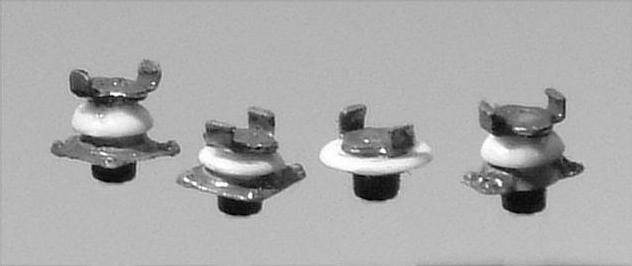
|
Some assembled track Here is a section of track assembled and pictured by James Moorhouse, with the conductor rail supports set with the use of his conductor rail supports drilling jig.
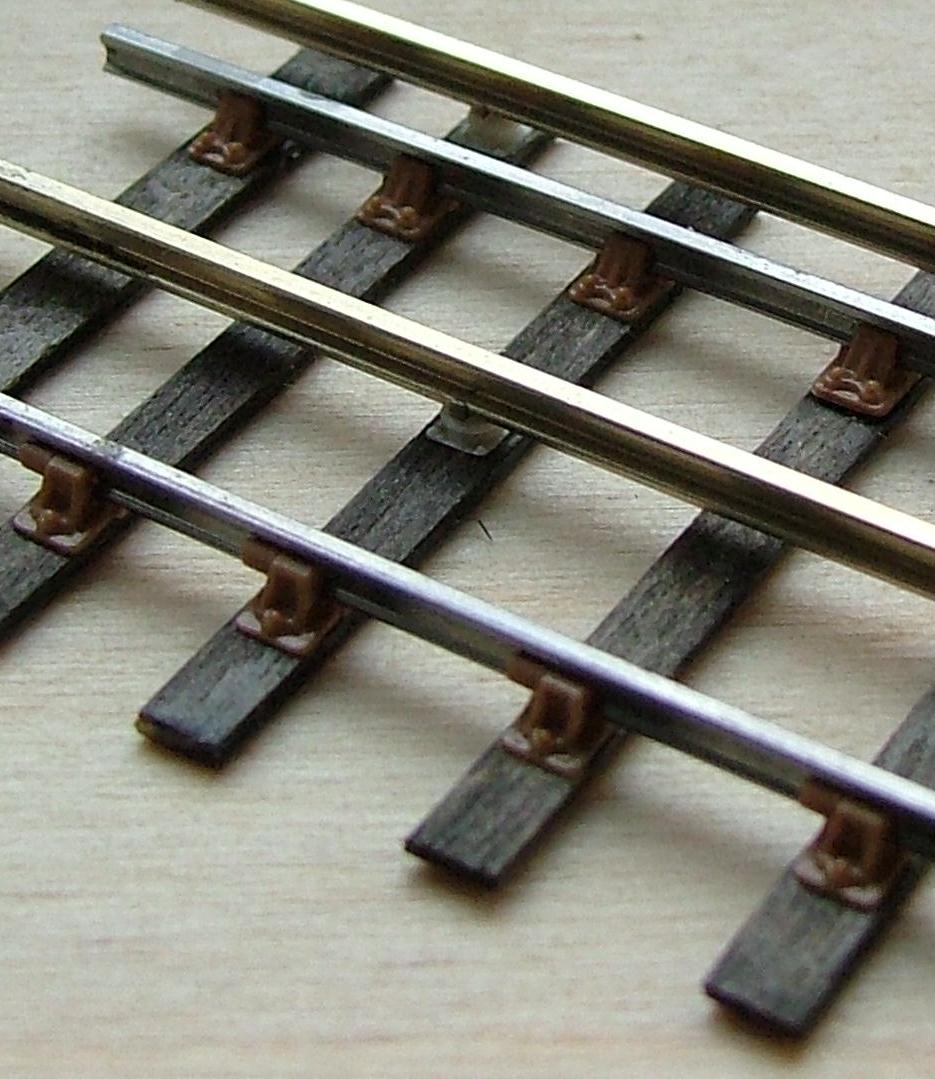
|
Russ Elliott
17 November 2006
amplified 29 November 2006
additional component pictures for conductor rail, ramps, supports and track added 21 March 2008
|









